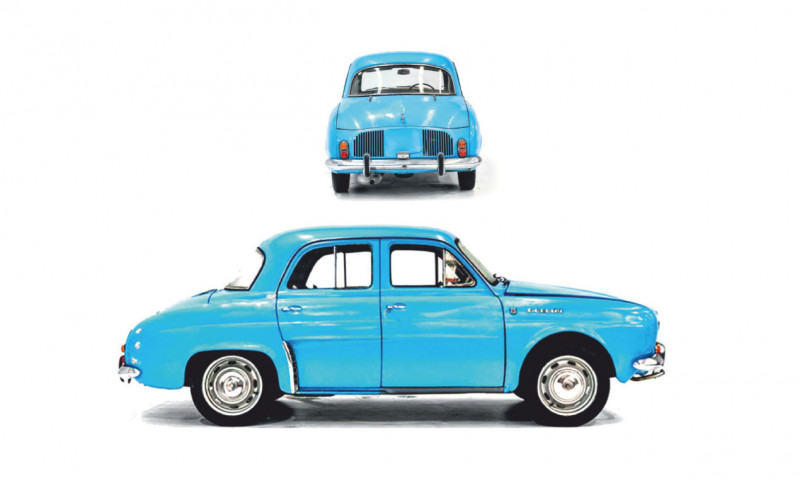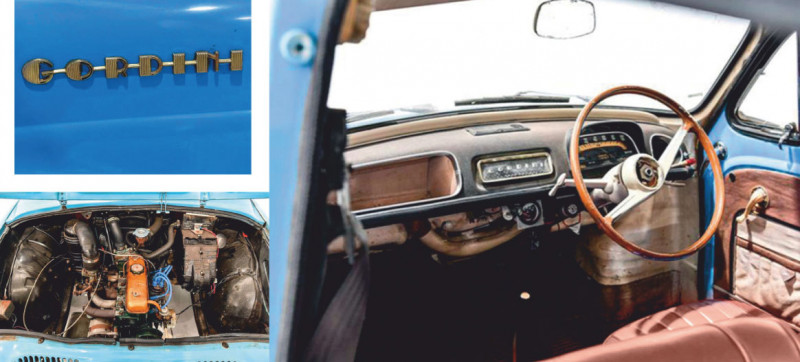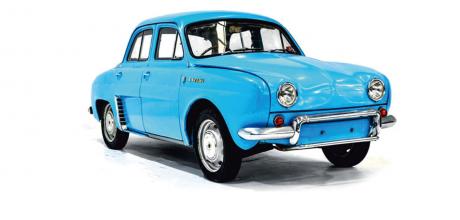1961 Renault Dauphine Gordini
France’s rallying cry. Diminutive competition giant killer delivered a tail-happy ending
Renault caused a stir when its third (and current) generation Twingo made an about-face: its engine is in the back. The inline three-cylinder donk is slightly ahead of the rear axle line, rather than truly rear-engined – but aside from Daimler’s smart (whose latest generation shares the Twingo platform), it’s a bold departure from the ubiquitous, front-drive econocar formula.

Back in the 1950s and ’60s, however – even accommodating the 1959 launch of the BMC Mini – the future of small cars looked like being this way. The drivetrain packaging efficiency and runaway sales success of the Volkswagen prompted really interesting rear-engined rivals from Fiat, BMW, Goggomobil, Hillman, NSU, Simca, Skoda – and a rash of Renaults that would endure into the 1970s.
Renault’s first rear-engined model, the 4CV (aka 750), appeared in 1947, less than two years after France was freed from German occupation. In fact, it’s long been suggested that the Volkswagen influenced its design. With its watercooled, longitudinal in-line four and light, monocoque chassis, the 4CV went on to sell more than 1.1 million units. In 1956, the 4CV was joined by the all-new ‘R1090’ Dauphine. Longer, roomier, more aerodynamic and just 30kg heavier, the all-new Dauphine also boasted an enlarged 845cc engine abaft.

It was comfortable, well equipped and set for success, not least among families and females with its elegant styling, pastel colours and optional Ferlec electromagnetic-clutch ‘automatic’ transmission. At the same time, Renault took the bold step of engaging racing car constructor Amédée Gordini to create a sports variant (R 1091) and a range of dealer-optional tuning parts.
Italian-born Gordini, a former Fiat racer, had set up business in France in 1952. Known as The Sorceror for his engine tuning prowess, Gordini’s relationship with Renault would later become the foundation for Renault Sport. The Dauphine Gordini produced 27kW (versus the standard 22kW) and had a four-speed gearbox and (from 1964) four-wheel disc brakes.
Despite notoriously tail-happy handling, Dauphine Gordinis won outright the triple-crown of Europe’s great road rallies, the Tulip Rally (1957), Monte Carlo Rally (1958) and Alpine Rally (1959) and dominated the 1.0-litre class in the Mille Miglia and circuit endurance races.
That success translated to more than 2.1 million Dauphines being built over 12 years. By then, Renault’s next revolution was already well underway, with the Renault 4 (1961), a five-door hatchback with front-wheel drive, that went on to sell more than eight million units over 33 years.
4CV ON THE GEAR
The Dauphine’s 845cc four-cylinder donk was a bored version of the 4CV’s Billancourt engine, with an iron block, three main bearings and alloy head. Gordini added a 32mm carb and higher-compression cylinder head with bigger valves, reaping 27kW and 65Nm, driving through a four-speed gearbox; Gordini also offered a five-speed gearset that fitted within the standard three-speed housing. Top speed for the showroom Gordini variant was 131km/h.
REAR-BIASED SWINGER
That 3950mm-long monocoque body is as clever as it is cute, incorporating air-cooling inlets ahead of the rear wheels and decent luggage space in the front boot, separated from the spare wheel that slides out from behind the front rego plate. Front suspension is by upper and lower control arms with coil springs, rear by swing axles with coil-over dampers. Its 650kg kerb weight is 60 percent biased to the rear.
IN DETAIL
‘1093’ Model code for 41kW homologation special (1962-’63)
131 km/h top speed
22 Gauge (thin) sheetmetal used non-structurally, led to Dauphine’s dreadful rust reputation
70,000 Dauphine Gordinis built in Brazil and Argentina


